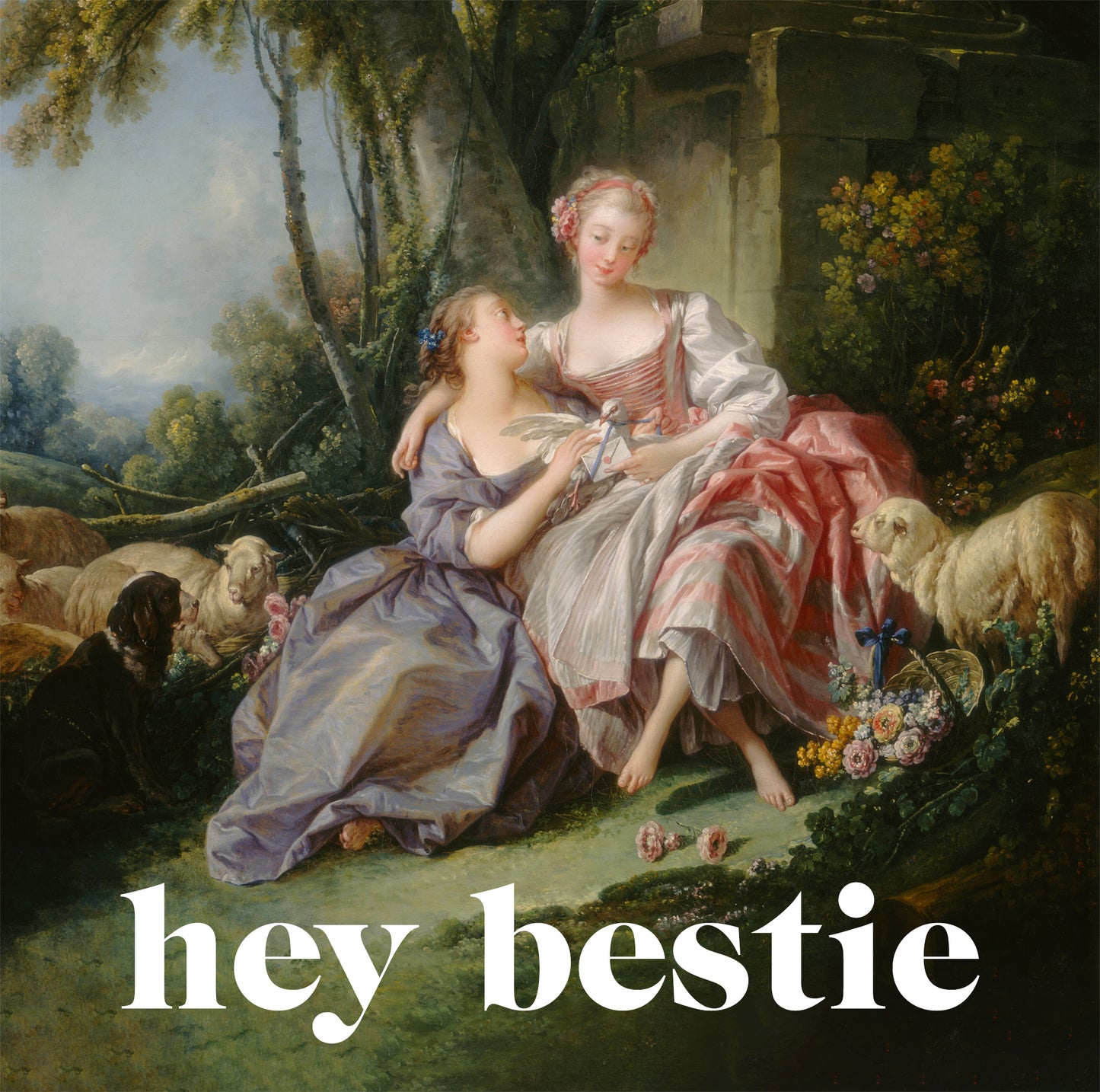Hey Bestie
Regular price
$45.00
Regular price
Sale price
$45.00
Unit price
per
Shipping calculated at checkout.
Couldn't load pickup availability
Free Shipping! All sales final.
"The Love Letter" by François Boucher (1750)
Featuring a French painting from the Timken Collection at the National Gallery of Art—and a beloved TikTok phrase. Size + care guide.
A little bit more about this painting from the National Gallery of Art:
"The Love Letter — also referred to as The Two Confidantes, The Messenger, The Lovers’ Secret Mail, and, less convincingly, The Beloved Sheep — typifies the pastoral idiom François Boucher had already made his own by the late 1740s. In a lush and verdant garden or wooded countryside, two young women recline at the base of a stone pillar surmounted by a carved lion. One ties an envelope around the neck of a pigeon with a blue ribbon while looking with admiration at her companion. The sheep that lounge about and the dog standing sentry tell us that these are shepherdesses, but like many such characters of Boucher’s they pay little attention to their responsibilities, preferring to idle the day away gathering flowers in a straw basket and sending missives via carrier pigeon. Boucher never concerned himself with the verities of country life, but employed the shepherdess type as an idealized and voluptuous protagonist for his decorative pictures. In this example he lavished his brush on the women’s satin dresses, their powdery skin, and the casual perfection of their hair. Despite their affectations, they are wholly at ease in their accommodating setting."
Featuring a French painting from the Timken Collection at the National Gallery of Art—and a beloved TikTok phrase. Size + care guide.
A little bit more about this painting from the National Gallery of Art:
"The Love Letter — also referred to as The Two Confidantes, The Messenger, The Lovers’ Secret Mail, and, less convincingly, The Beloved Sheep — typifies the pastoral idiom François Boucher had already made his own by the late 1740s. In a lush and verdant garden or wooded countryside, two young women recline at the base of a stone pillar surmounted by a carved lion. One ties an envelope around the neck of a pigeon with a blue ribbon while looking with admiration at her companion. The sheep that lounge about and the dog standing sentry tell us that these are shepherdesses, but like many such characters of Boucher’s they pay little attention to their responsibilities, preferring to idle the day away gathering flowers in a straw basket and sending missives via carrier pigeon. Boucher never concerned himself with the verities of country life, but employed the shepherdess type as an idealized and voluptuous protagonist for his decorative pictures. In this example he lavished his brush on the women’s satin dresses, their powdery skin, and the casual perfection of their hair. Despite their affectations, they are wholly at ease in their accommodating setting."








